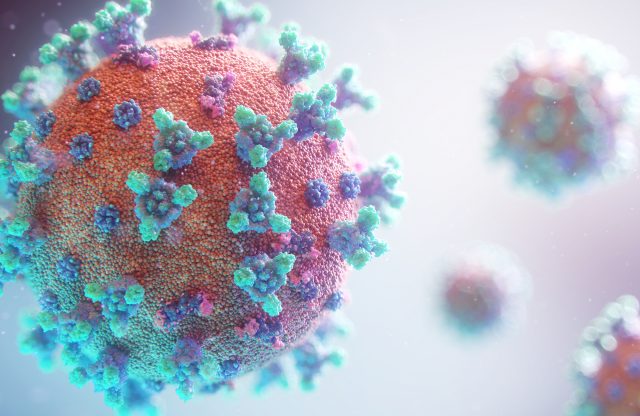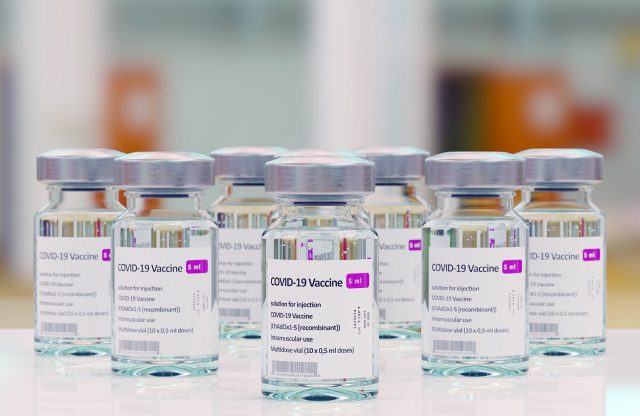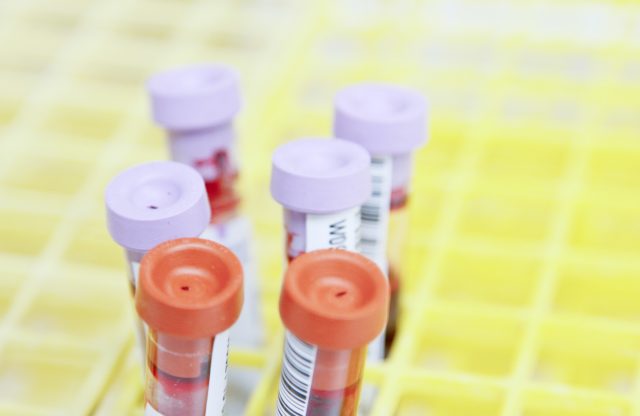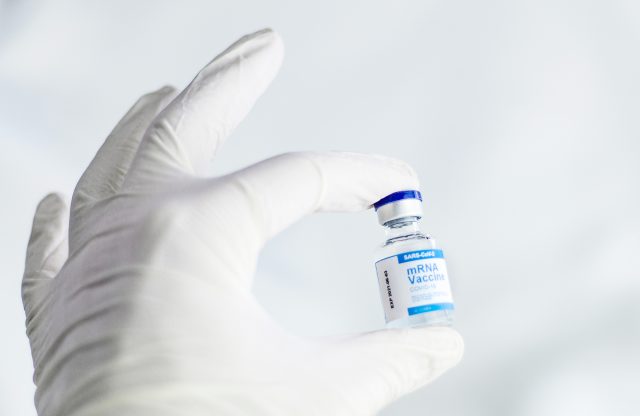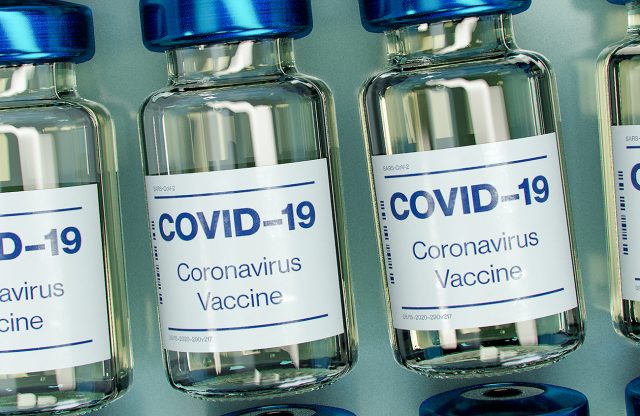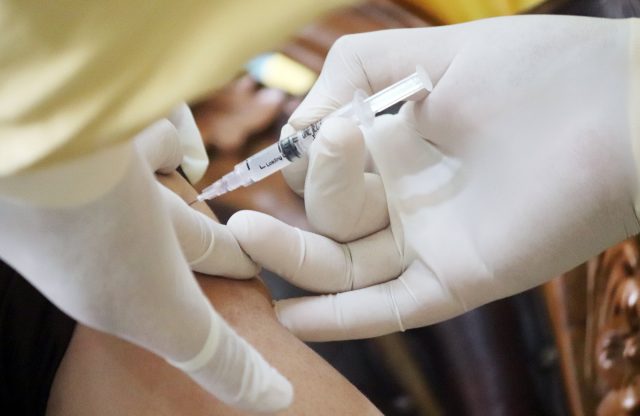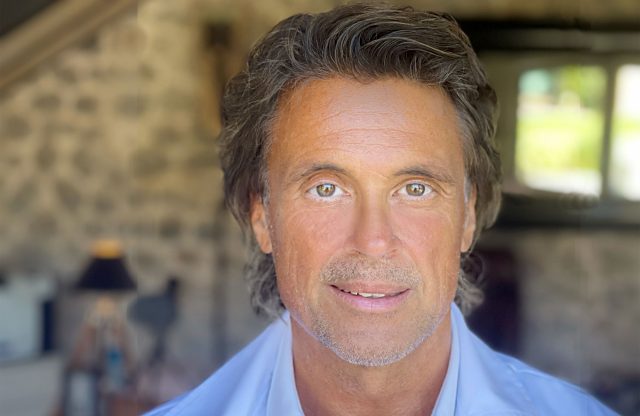Differing opinions about the Lambda variant

Dr Robert Hess – 07/29/2021
Differing opinions about the Lambda variant: Super mutant, successor to Delta or damp squib?
For the first time since the SARS-CoV-2 Task Force was established 18 months ago, a difference of opinion has arisen, specifically with regard to the Lambda variant. What everyone agrees on is that the Lambda or C.37 variant is clearly more contagious than the original Wuhan strain. In addition, it is much more resistant to antibodies, and the existing vaccines therefore have a reduced efficacy against it. The reason for this is three mutations in the spike protein, which render it less susceptible to neutralization by antibodies. Added to which there are two mutations that make the variant itself more infectious.
The WHO still has Lambda marked out as a “variant of interest”, as does the CDC, but there are other authorities, such as in Japan, that have classified it as a “variant of concern”. Some scientists argue that the Lambda variant could also have the potential to become a super mutant. At the moment, it is particularly widespread in Latin America. In vitro laboratory experiments show that this variant is clearly more contagious than the wild-type (Wuhan) variant, but at the same time less contagious than the Delta variant. The logical conclusion from the in vitro laboratory tests is that it cannot out-compete the Delta. The long-term prospects for the Lambda variant are thus unclear, and we will report on further developments on an ongoing basis.
The reduced efficacy of vaccines is a hugely important topic of discussion at the moment. More and more data is being published all the time, and in the EU alone, over 150,000 fully vaccinated people have nonetheless contracted Covid-19. The figures emerging from Israel on so-called “breakthrough infections” where the virus manages to breach vaccine defense show that not only low responders and non-responders are affected, but also fully vaccinated, healthy individuals. The reduced effectiveness of the vaccines has the consequence that, even in countries with high vaccination rates, intensive care units are slowly beginning to fill up again. Because increased numbers of younger people and even children are being taken to ICUs, especially in the USA, the question arises as to whether the Delta variant is especially dangerous for children. There is a lot of evidence pointing in this direction. The trigger is possibly the viral load, which is considerably higher with Delta than with the wild type or the Alpha variant and therefore increases the risk of hospitalization. More data is required if we are to reach any meaningful conclusion, however, and the SARS-CoV-2 Task Force will be focusing this in the next few days and weeks.
For our Premium clients who belong to either the non-responder or low-responder category due to a pre-existing health condition, we have developed further criteria. We monitor the development of antibody formation after the second vaccination and set other benchmarks specifically for low- or non-responders, because approximately 20% of our Premium clients come under this heading. Even fully vaccinated individuals who become infected and do not fall into the low-responder or non-responder categories can, of course, also have symptoms, although these may be much less severe, more resembling a flu-like infection, with headaches and a runny nose, sometimes even a cough. It must nevertheless be borne in mind that even fully vaccinated persons who become infected can go on to develop and suffer from Long Covid. A high temperature is reported relatively infrequently. This is because the adaptive (i.e. acquired) immune system, is able to keep the infection under control after vaccination has taught it the specific structures of the virus. A high temperature tends to occur when the innate immune system is called into action to fight an unknown pathogen with a much more non-specific reaction.
This is precisely where the problem arises with the forthcoming season of coughs and sneezes: if a relatively low rate of coronavirus coincides with a wave of common colds and rhinovirus, it is vital that people displaying symptoms stay at home and take a rapid test to clarify which of the viruses they have contracted. The problem is that they might otherwise pass on coronavirus to someone who has not yet been vaccinated and who might therefore be susceptible to a severe bout of Covid-19. Strict self-isolation should therefore be observed if even the slightest symptoms manifest themselves. A rapid test should then provide the necessary clarification. It is also important to remember that symptom-free vaccinated persons are also able to pass on the virus.
For the past one and a half years, we have been wearing face coverings, have kept a minimum distance from each other and no longer shake hands. With rhinoviruses, we know that post-infection immunity does not last long, which is why most people inevitably get repeat infections. Because we have not been exposed to these viruses for a long time, the likelihood increases of getting infected when exposed. Significantly more viruses are shed when an individual has contracted the Delta variant. Moreover, a much smaller volume of virus particles seems to be sufficient to infect another person. The upper respiratory tract is particularly affected. That is why sufferers often report nasal and throat symptoms as well as headaches. For the coming wave of influenza, it will be very important to quickly establish which virus is involved.
In the next two months, we will be making recommendations to our Premium clients on booster or next-generation vaccines against the coronavirus as well as other vaccinations that are appropriate for the autumn season and can help stave off a severe bout of flu, pneumococcus, whooping cough and shingles. With the exception of shingles, these are all diseases of the lungs. We work out the optimal protection against a flu epidemic for each of our Premium clients on an individual basis. And there is one further point to consider: if you have not yet been fully vaccinated with both doses of a coronavirus vaccine, please note that there should be a minimum two-week interval between a corona jab and a flu jab.
The preferred regimen against influenza is currently a high-dose quadruple vaccine. At least, that is the plan in Europe. In the USA, the decision has still to be made as to whether to go with triple vaccine as before or to upgrade to quadruple, which is looking increasingly likely. With the social distancing measures in place last season, the influenza wave was virtually absent, which means that much higher numbers are to be expected this autumn-winter season. It is important to reduce the risk of bacterial superinfection in case of SARS-CoV-2 infection.
Among the secondary diseases that are associated with Covid-19, special mention should be made of mucormycosis, also known as “Black Fungus”. It is spreads easily, many patients have died from it, and it is cropping up in countries all around the world. In New Delhi (India), for example, a separate hospital ward had to be set up because of the rampant fungal infection. We have to assume that secondary diseases associated with corona infection will increase along with the arrival of new mutations. Even the otherwise sensible wearing of masks unfortunately causes side-effects, especially in the case of children. One example is respiratory syncytial virus (RSV), a common cold virus that is harmless for most people but potentially deadly for infants, as instances throughout this summer have shown. The reason is that children have built up an “immune deficit” – the compulsory wearing of masks has meant that their immune protection has not been sufficiently trained and collateral damage has occurred. Against this background, we ask all Premium clients who have children under one year of age to contact their consultant to discuss a possible passive vaccination against RSV.
In one of our forthcoming Keynotes, we will be looking at the issue of vaccine-induced mortality in greater detail. On our Task Force, we have a pathologist who is researching this very issue. A year ago, we were already stressing the importance of conducting post-mortem examinations of individuals who have died from Covid-19 to gain a better understanding of the disease. On the other hand, we also think it is necessary to conduct post-mortem examinations of individuals who have died not long after being vaccinated, although this is a much more controversial matter. In previous Keynotes, we have reported in detail on cerebral venous sinus thrombosis (CVST) cases associated with vector-based vaccines. There remains a large gap in our knowledge here. Pathologists are generally not even aware that a deceased person may have recently been vaccinated. There are several university clinics and research institutions conducting studies into this whole issue. Previously, the sole focus of their attention had been on patients who died from Covid-19. More recently, they have also been looking at the rare but severe side-effects of vaccination. These include not only CVST and myocarditis but also autoimmune diseases.
The problem arises because vaccinated individuals, unlike Covid-19 patients, do not usually die while under clinical observation. The medical examiner then fails to make a connection with the vaccine and certifies the cause of death as natural or unknown, so that the authorities see no suspicion of foul play and release the body for burial or cremation. This procedure is standard in all OECD countries. We therefore have to assume that the number of people who have actually died due to vaccination is higher than officially reported. This conclusion is politically explosive, especially at a time when the vaccination campaign is running out of steam, when the Delta variant is spreading exponentially and politicians are considering the introduction of vaccine passports. The medical reasons for vaccination have to be weighed up on an individual basis, and as we see it, considerations of individual protection are being subordinated to the social policy objective of getting the whole population vaccinated as quickly as possible. Carrying out more autopsies of deceased patients who have been vaccinated would help to clarify matters, so that any causal link can be definitively ruled out or in.
This area of research could also significantly improve the further development of vaccines while boosting public confidence in vaccination in both the medium and long term. At this point, we have to remind our readers that, after more than a year now, no vaccine has yet been finally approved. BioNTech/Pfizer do, however expect their vaccine to receive approval from the FDA in the autumn.
In our previous Keynote, we had indicated that we expect the situation to become much more complex in the coming weeks, with the next step being the introduction of booster and next-generation vaccines. We are working hard to develop the best possible individual strategy for our Premium clients. The CDC has also begun to develop a concept for booster vaccinations for the coming winter.
In the political arena, too, a lot has happened, and the next move on the vaccine front is being mapped out as a priority by governments around the world. The EU has already ordered 1.8 billion doses from BioNTech for a possible third vaccination. Many countries are developing strategies for a third round of vaccination. While Sweden is looking to a possible start in 2022, Israel has already embarked on its third round of vaccination, and President Isaak Herzog has set an example by receiving his third jab.
As first world countries discuss booster vaccinations, the shortage of vaccines in the third world is inevitably going to lead to political tensions. The current dispute between the WHO and the German government is just a foretaste of what lies around the corner.
We discussed booster vaccinations and next-generation vaccines at great length in our last Keynote, setting out clear criteria for our Premium clients. As already indicated, we expect the WHO to adopt the same criteria. We are of the opinion that the mutation rate will most likely increase. Consequently, we would advise against booster or next-generation vaccines being administered too soon, because society cannot carry on vaccinating ad infinitum – every new vaccination is bound to trigger an autoimmune reaction. In most cases this is harmless, of course, but we have to assume that many autoimmune diseases will be further aggravated by the vaccines. So there is a natural limit to how often you should be inoculated. Consequently, one has to be very careful about deciding if and when to get a booster vaccination. The accelerated policy discussions on booster vaccination are being driven by the skyrocketing numbers, a prime example being Israel where significantly more people are having to be hospitalized despite its high vaccination uptake. Based on the first available figures from Israel, the side-effects of vaccination, at least with the mRNA vaccine, are similar to those of the second vaccination. The Israeli Ministry of Health has announced that the efficacy of the current vaccine has dropped from the original 39% estimated two weeks ago to a more realistic 29%. With figures in this range, it is unlikely that regular approval would be granted.
In the USA, too, some states are registering a new peak in infections, with more than 100,000 cases per day nationally. Florida alone has seen an increase of 50%. As a result, mask wearing has been reintroduced in some states, even for the fully vaccinated.
Israel has reverted to imposing restrictions and protective measures. In this regard, they are adopting a completely different approach than the UK where restrictions have been lifted entirely and the government is relying on the population to exercise common sense. In Britain, the number of deaths attributable to the coronavirus has risen to a daily high last seen in March. There is a strong push for certain groups to be vaccinated, for example pregnant women. We are in favor of this in principle, but only after due consideration on an individual basis. If you, as a Premium client, have any questions in this regard, please contact your consultant.
Meanwhile in Japan, the brakes are being slammed on because of the Delta virus. Hospital capacity is being stretched, not least because of the Olympic Games. Only the most serious cases are admitted to hospital, and the majority of those who fall ill have to stay at home and receive treatment from their family. In Texas, too, many hospitals have had to postpone elective surgical procedures. Our assessment that the Delta variant is extremely contagious is becoming more and more self-evident. The CDC also confirms that the Delta variant is at least as contagious as chickenpox. It is more rapidly transmissible than MERS (Middle East respiratory syndrome), SARS, Ebola or seasonal flu. Added to this is the fact that even vaccinated people with breakthrough infections of the Delta variant carry just as many viruses in their nose and throat as the unvaccinated and can thus spread the disease just as prolifically.
To date, there have been more than 200 million coronavirus infections and the official death rate stands at 4.25 million. By our own calculations, however, the number of deaths is closer to 12 million, a figure that the WHO has recently confirmed as being more realistic. We arrived at this total by subtracting the collateral damage caused by hospital occupancy from excess mortality over the relevant period. This is the same approach that is now being taken by the statisticians at the WHO. Calculated over 18 months, this number is far higher than that for influenza deaths in recent years.
The EU is also buying 200 million doses of Novavax from the USA, a vaccine that still has to be approved. We have our reservations about Novavax. However, due to the delay in approval, its Phase 3 testing has coincided with the current variants. This vaccine could potentially play a supplementary role. We are, of course, continuing to monitor developments here.
In the case of a booster vaccine, the correct timing depends on a combined score derived from the reference values for the three defining pillars, namely antibodies, T-cell immunity and general immune response. This score is calculated by means of an AI algorithm, taking into account the effectiveness of the current vaccines against the prevalent Delta variant. And of course, each calculation of the best and most sensible time for booster vaccination is made on an individual basis. We have further raised the reference values for the antibodies, in particular Class 1 antibodies (i.e. those with a low effect) of which much greater numbers are required to counter the significantly higher resistance of the Delta variant. We have also introduced a four-level classification of high responder, medium responder, low responder and non-responder for all Premium clients as a further parameter for the AI system. The calculation additionally takes into account any side-effects that manifested themselves after the first two vaccine doses were administered. On this basis, we are able to calculate the optimum interval before a third vaccination takes place. To date, there have been very few studies on this topic. We have at our disposal almost all the data that has been published so far, in particular from the USA. This clearly indicates that the interval between a second and a third vaccination should be around the six to eight months mark. Of course, the decision must also take into account whether it might not be more sensible to wait for a next-generation vaccination, for example the BioNTech version that has been formulated to target the Delta variant. Another option is to induce a heterogeneous immune response by means of a heterogeneous (mix-and-match) vaccination strategy.
